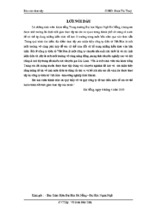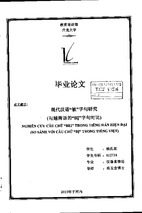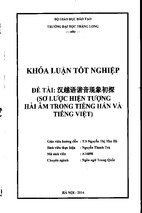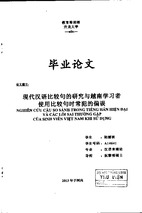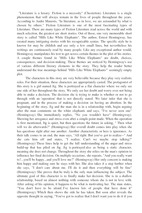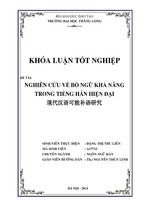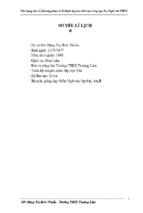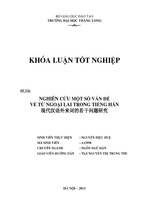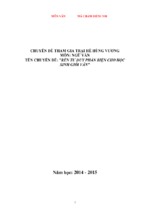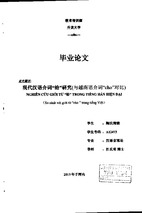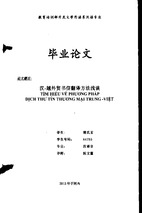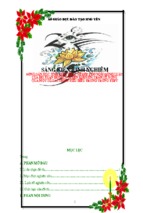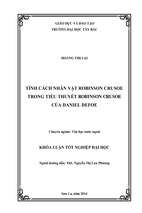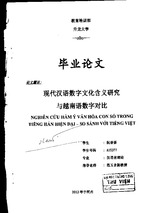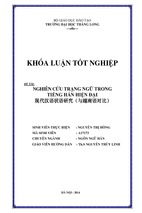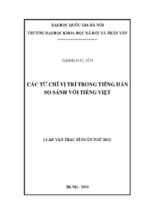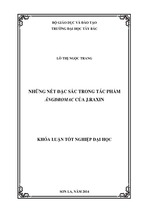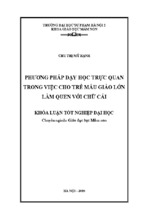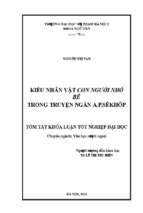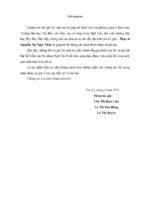"Literature is a luxury: Fiction is a necessity" (Chesterton). Literature is a single
phenomenon that will always remain in the lives of people throughout the years.
According to Andre Maurois, "In literature, as in love, we are astounded by what is
chosen by others." Fiction Literature is one of the most fascinating types of
Literature. There are many types of Fiction Literature read across the world and with
much selection, the greatest are short stories. Out of those, one very memorable short
story is called "Hills Like White Elephants". The author, Ernest Hemingway, has
created many intriguing stories with his recognizable syntax. The specific style he is
known for may be childish and use only a few small lines, but nevertheless his
writings are continuously read by many people. Like any exceptional author would,
Hemingway manipulates his text to get across certain themes in the plot of his stories.
A couple themes found in "Hills Like White Elephants" are doubt, choices,
consequences, and decision-making. These themes are noticed by Hemingway's use
of various different literary elements in the story. They help the reader better
understand the true meanings behind "Hills Like White Elephants"' seemingly empty
plot.
The characters in this story are very believable because they play very realistic
roles. For their situation, these characters are appropriately casted. The protagonist of
this story is a girl named Jig. She is portrayed as a flat character where we only see
one side of her throughout the story. We only see her doubt and worry over not being
able to make a decision. The decision she is trying to make is whether or not to go
through with an 'operation' that is not directly stated. We later infer that she is
pregnant, and in the process of making a decision on having an abortion. In the
beginning of the story, Jig and the man she is in a relationship with, begin arguing
after the man comments on the white elephants and says, "I've never seen one"
(Hemingway). She immediately replies, "No you wouldn't have" (Hemingway).
Showing her arrogance and stress even after a simple point made. When the operation
is first mentioned, Jig is quiet, but then questions the future in asking, " Then what
will we do afterwards?" (Hemingway) Her overall doubt comes into play when she
has questions right after one another. Another characteristic or hers is ignorance. As
their talk comes to an end, the man says, "All right. But you've got to realize--" And
she cuts him off and states, "I realize. Can't we maybe stop talking?"
(Hemingway) These lines help to get the full understanding of the anger and stress
build-up that has piled on Jig. Jig is portrayed also as being a static character,
meaning she does not change. Throughout the story she relies on the man's opinion to
influence her final decision. On multiple occasions, she repeats, "And you really want
to?...you'll be happy...and you'll love me?" (Hemingway) Her only concern is making
him happy and making sure he stays with her. She also takes it a step further when
she says, "I don't care about me. I'll do it and then everything will be fine"
(Hemingway). She proves that he truly is the only man influencing the subject. The
ultimate goal of this character is to finally make her decision. She is in a shallow
relationship, based on almost nothing with someone whom she is not in love with.
After asking of his opinion, it happens to be what is motivating her. The man states,
"You don't have to be afraid. I've known lots of people that have done it"
(Hemingway). Which then shows the side he has taken. But soon after reveals the
opposite thought in saying, "You've got to realize that I don't want you to do it if you
don't want to. I'm perfectly willing to go through with it if it means anything to you"
(Hemingway). Jig later answers, "Yes, you know it's perfectly simple"
(Hemingway). The overall decision will forever change their relationship.
The antagonist of the story is the man. He is the one thing getting in the way of
Jig's honest decision and accomplishing her goal. He is also a flat character because
in the end all he wants is for Jig to have the abortion. He shows this throughout the
discussion as he fills her head with his nonsense about her not having the abortion in
saying things such as, "If you don't want to you don't have too. I wouldn't have you
do it if you didn't want to...." (Hemingway) But with conflicting reports also says, "I
think it's the best thing to do. But I don't want you to do it if you don't really want to"
(Hemingway). Then as she ponders, he walks away, letting the reality settle in for her
final decision. The man is characterized as being static. This is the only side of him
shown. As Jig is contemplating the facts presented to her, he continues covering his
tracks and continuously says, "...it's all perfectly natural...a perfectly simple
operation, it's not really an operation at all" (Hemingway). He is therefore careless to
the situation at hand, mainly because now and afterwards, his life will still be
unchanged. Furthermore, he argues, "That's the only thing that bothers us. It's the
only thing that's made us unhappy" (Hemingway). He is implying that afterwards
they will, in fact, be happy. He is the one wanting to have the abortion in the
relationship. Him being static makes him unmoved in his decision, escalating the
pressure for Jig. The man's primary goal is to persuade Jig to take his opinion on the
abortion. It has a large impact on her decision because the story itself and the
character's attitudes are very realistic. Diane Andrews expands by saying,
"Hemingway leaves his characters as he found them, in the middle of something
larger, outside the margins of the story." By the end of the story, Tim Akers
recognizes, "...the American has revealed himself to be self-centered and lacking in
feeling for the girl, Jig, despite his protestations of love." Most critics would have to
agree in that Hemingway has exceptional development of his two main characters.
Ernest Hemingway uses limited setting that does not include symbolism behind its
cover. The setting is critical to creating a powerful and affective narrative. This
writing element sets the stage and gives insight to the culture and traditions of the
location of the story. Not only does the location dictate and explain why a certain
character acts and behaves in a strange manner that is not typical, but the moment in
history that the event takes place in can give understanding to the deeds of each
individual that may appear within the confines of the narrative. The setting can be
found and used with the help of the where, the when, and the tone and atmosphere.
Without a specific date a story will not have much hope to stand out as much
as Ernest Hemingway’s “Hills Like White Elephants.” However, a time period or a
location does not need to be palpably and directly stated in the text. Many writers do
not simply articulate the time period. Even in “Hills Like White Elephants,”
Hemingway gives only indirect indication of the setting. Never does he state the year.
Hemingway writes, “It was very hot and the Express from Barcelona would come in
forty minutes. It stopped at this junction for two minutes and went on to Madrid.”
Because these two cities are in Spain, a conclusion can be made that the chronicle is,
in fact, set in the country of Spain. Sometimes details can only give wide-ranging
ideas of the general location. In “Hills Like White Elephants,” Hemingway mentions,
“The American and the girl with him sat at a table in the shade outside the building.”
The writer at this point labels the ethnicity of the man in the story. Not only does this
reveal a modest bit of information regarding the character, but Hemingway is also
illuminating the actuality that the American is an outsider and thus not in America
with his own kind. On the other hand, it may be assumed that the girl Jig may
possibly be Spanish for she is not labeled as a foreigner. Language changes can often
be big clues to the setting, as long as the language can be traced back to its country of
origin. At one point, in the beginning of the story, the man behind the curtain utters,
“Dos cervezas” (Hemingway). An understanding of diverse languages can lead to the
discovery that this phrase is Spanish. Although some clues are larger and more exact
then others, a hypothesis can be drawn using only small details regarding the
location.
When an event takes place can also manipulate how a relationship to the story
is created. Even within one location, the mannerisms of the civilization within the
area can differ in tremendous quantities. In “Hills Like White Elephants,”
Hemingway never directly states the time period of the event that is occurring. Clues
can be found about the time just as evidence can be found to discover the place of the
story. In this case, the means of transportation the couple is taking hints at a time
period. At the end of the story Hemingway says, “He looked up the tracks but could
not see the train. Coming back he walked through the bar room where people waiting
for the train were drinking.” The couple is taking the train, and because of this it can
be assumed that the time is during the 1900s. However, one cannot use this particular
clue as fact for even in this day and age it is not uncommon to take the train. Another
clue comes from the girl’s actions. Hemingway writes, “I wanted to try this new
drink. That’s all we do, isn’t it? Look at things and try new drinks.” Although the girl
is pregnant and she wants to give her child life, she continuously drinks alcohol
whenever she has the opportunity. It is apparent at this point in time that the link
between alcohol and birth defects has yet to be discovered. A different clue to time is
not explaining the year but instead the time of day. Throughout the story the writer
mentions, “”It’s pretty hot,” the man said” (Hemingway). The heat that the couple is
experiencing allows a conclusion that the time of day is midday. The time and the
location often are added together to create the tone and the atmosphere.
With the assistance of the setting, a story generates an atmosphere. Atmosphere
helps connect character emotions with the situation at hand especially in “Hills Like
White Elephants.” Repeating key words and themes can set the tone, which can
quickly give an idea about the emotions going on within each of the important
characters. Hemingway writes, “Close against the side of the station there was the
warm shadow of the building….” The fact that the shadow is warm gives the idea of
a calm atmosphere. In fact, the situation is so calm that the story can seem slow and
plain if time is not taken to understand the finer details. One critic says, “The story
appears deceptively simple. A man and a woman sit at a table at a Spanish railway
station, waiting for a train” (Henningfield). All the two do is sit, drink, and talk,
which seems unimpressive. However, the internal conflict is raging inside the two. In
the beginning of the story Hemmingway says, “…sat at a table in the shade outside
the building. It was very hot….” The uncomfortable heat that the midday sun brings
creates this idea of how tense things are between Jig and the man. The atmosphere
gives emotion to the story through the setting and allows emotion to be more
powerful when written. Setting often sets the tone by coinciding with the conflict
within the characters. Critic Tim Akers writes, “By dividing the setting in half, with
one side sterile and the other fertile, Hemingway uses the setting to reinforce the
division between the couple.” Hemingway here has turned the surroundings into a
mirror that mimics the two characters. Utilizing the setting pushes the story in the
direction that Hemingway anticipated and gives a better understanding of the
situation created by Ernest Hemingway.
The conflict between the characters is a very realistic. This conflict is putting a
strain on the relationship of this young girl and this man. Nothing is enjoyable about
their situation. It is clear that there is an issue that is causing a problem. There are
several types of conflicts this story. The man verses girl, girl verses self, girl verses
society, abortion verses relationship, man verses abortion, and girl verses inner
feelings.
Although there are several struggles in this element of literature, the most
important is the abortion verses relationship. Abortion is the major conflict betweens
characters because that is what the talk has been about. Even in the little
conversations to the peak of jokes. The abortion conflict, which is mainly a decision,
is what determines the outcomes of their relationship.
The most important minor conflict is the man verses girl. Why? Because the
girl is not thinking about what she wants, or her inner feelings, but what he wants.
The man also knows that the girl is not really making decisions for herself that is why
he is the bee buzzing in her ear. She wants to be loved and keep her lover. She feels
that if she goes against him, he will ultimately change and then leave her. This is why
it is a minor problem compared to abortion verses relationship, because eventually
the man and girl will separate which the girl can only see if she has the baby!
In many ways were the conflicts displayed in the story. In the story the man
says, “I know you wouldn’t mind it, Jig. It’s not really anything…” (Hemingway). As
seen here the man is making decisions for her. He is telling her what he ‘knows’ and
what he feels is best for her and him. He is supposedly telling her what he ‘knows’.
He says “We’ll be fine afterwards. Just like we were before.”(Hemingway). The man
is talking about the conflict, abortion. He believes he conflict will bring more
problems. He is trying to get rid of the issue/conflict. He talks about how they will go
back to normal and that is fine, it’s not really anything!
The major conflict is brought up directly between the two, Jig and the man.
The man clearly states that the abortion is causing a problem when he says, “That’s
the only thing that bothers us. It’s the only thing that’s made us
unhappy!”(Hemingway). Here the man tells the girl that the pregnancy is a real
problem and is causing their relationship to crumble. He brings to her attention that
this decision is causing them to be unhappy. He then later inserts that he feels it is the
best thing to do! During their heated talk the man argues, “I think it’s the best thing to
do…”(Hemingway). At this point the man stands firm, he believes that whether she
agrees or disagrees with him, he still believes strongly that, him being older, his
decision is best.
The most important minor conflict appeared in varies places throughout the
couple’s conversation. After letting everything marinate the girl proclaims, “Doesn’t
it mean anything to you. We could get along?”(Hemingway). By the time the
conversation is where it is the girl has had enough. She realizes that the man wants to
have nothing to do with the baby. She explains to him that they could make it work,
that they could tough it out. It seemed that her being pregnant meant absolutely
nothing to him. He gave out his point of view and left it all for her to swallow and
come up with a decision. At this time there relationship is done. He cares nothing
about her and she understands that now.
After the girl realizes that her relationship is crap, she begins to change. In her
change she becomes aggravated with him and exclaims, “Would you please please
please please please please please stop talking?”(Hemingway). The girl, Jig, realizes
that the conversation is going nowhere and that she fed up. She is so fed up that she
asks him to be quiet and stop talking. She is so pissed that she does not want to hear
him speak. She has seen, heard and experienced a lot. The drilling of the man’s
nonsense has driven her crazy!
Given that the possible themes were choices, consequences, and doubt. The
conflict that went on throughout this story was tied into the themes. What the man
and the girl, Jig, hand on their hands were choices. Choices of whether or not they
should go through with the abortion. Following their choices were consequences,
which eventually led to doubt. If they picked the wrong choice their consequences
would be great.
Ernest Hemingway is known, not for what information he tells, but
rather the important details he leaves out in his short stories. One main theme he
emphasizes
throughout Hills
Like
White
Elephants is
decision-making
through symbolism. Symbolism is “the art or practice of using symbols, especially by
investing things with a symbolic meaning or by expressing the invisible or tangible
by means of visible or sensuous representations” (Symbolism). Hemingway uses this
technique to enforce the importance of ideas, without directly stating them. This story
is filled with symbols, most of which may not be noticed. They add much importance
to the story’s true, hidden meaning and the choices Jig has to make.
At first glance at the title, the ‘hills’ infer the shape the protagonist, Jig, will
undergo during her pregnancy. ‘White elephants’ are defined as being a rarity among
animals, and in the end, outcasts. The hills are repeated soon after when Jig looks off
into the distance and comments, “They look like white elephants”
(Hemingway). One critic, Lewis E. Weeks Jr., concurs in saying, “Immediately the
symbolic significance of the title and reason for the frequent mention of hills
becomes apparent.” The importance of this is that it is showing her contemplation of
the situation. She expands further to say, “They don’t really look like white
elephants. I just meant the colouring of their skin through the trees” (Hemingway).
She is contemplating the different outcomes of her decision. The hills that look like
white elephants also serve as a reminder of their conflicting views on abortion.
Another meaning for a white elephant is “anything rare, expensive, and difficult to
keep; any burdensome possession; an object no longer esteemed by its owner though
not without value to others” (Johnston). This is basically one point of view on how
the man feels about the unwanted child.
A second symbol that puts the mood into perspective is setting. Kenneth G.
Johnston goes on to say, “Hemingway has skillfully used the setting in ‘Hills Like
White Elephants’ to help reveal and reinforce situation, characterization, and theme.”
The story is set in “the valley of Ebro” in Spain (Hemingway). The Spanish setting
contributes to the overall ironic tone of the story. The girl does not speak Spanish,
which shows the helplessness of her character and how dependent she is on the man
she is with. He is her only interpreter and guide. Another critic, Diane Andrews, gave
a similar opinion, commenting, “In Hills Like White Elephants the setting serves both
to locate the story in space and time and to function as an important symbol.” To
continue, their lives are symbolized by the train and by their bags, with “labels on
them from all the hotels where they spent nights” (Hemingway). The location is also
another symbol in itself. The station sits between two lines of rails suggesting the two
different directions where the couple may go—toward Madrid and the abortion or
away from Madrid toward the decision of making a family. This is very important to
the story because it explains every aspect of what Jig is going through in her life.
The last contribution to the theme in Hills Like White Elephants is the
dialogue between the two main characters. It is an easy one to understand while there
are plenty of lines implying a similar meaning. One of those lines again explains
setting by reading, "The girl was looking off at the line of hills. They were white in
the sun and the country was brown and dry" (Hemingway). The hills are outcasts in
comparison with the country, as is Jig. She is alone in her predicament compared to
everyone else. Her and her male companion have entered into a shallow relationship,
and now the consequences of their actions have come to face them. The couple is
trying to make a final decision whether or not to have the abortion. Their relationship
is at a halt. Jig proves this point when she says, “That’s all we do, isn’t it? Look at
things and try new drinks?” (Hemingway) She is inferring that they are in a
fundamentally meaningless commitment. They are not in love despite the man
saying, “That’s the only thing that bothers us. It’s the only thing that’s made us
unhappy” (Hemingway). Afterwards, they are trying to convince themselves that
things will be the same once the ‘operation’ is completed. Failing to persuade her, he
returns the conversation to the abortion. She asks, “Would you please please please
please please please please stop talking?” (Hemingway) Repeating the word ‘please’
this way indicates just how desperate their situation is. He tells Jig that the operation
is very simple and then, although not directly stated, it is concluded that she decides
to do it. All that is left is a despair that the girl is trying to cover up by smiling and
saying, “There’s nothing wrong with me. I feel fine” (Hemingway). This shows the
crumbling of their relationship. In the end, the man takes the bags and carries them
around the station to the other side of the tracks. The train that they are planning to
get on is another one of Hemingway’s symbols. It symbolizes life and the fact that
she is going back home. The lines and actions of the characters reinforce the theme
and the true stress they are under in the story.
Hemingway’s use of these symbols are essential in describing the theme.
Kenneth G. Johnston and many other critics agree, “The reader can see clearly and
deeply…a rich pattern of dialogue, setting, action, and allusion carefully woven
into Hills Like White Elephants.” There are many points to consider when reading
this short story, but symbolism is one of the most important. Lewis E. Weeks Jr.
expands by saying, “Although subject, point of view, characterization, dialogue,
irony, and compression all make Hills Like White Elephants one of Hemingway’s
most brilliant short stories, the symbolism implicit in the title and developed in the
story contributes more that any other single quality to the powerful
impact.” Hemingway shows great symbolism in Hills Like White Elephants and like
all of his other stories, tries to teach the values of life and the consequences of
certain actions.
To summarize, Ernest Hemingway’s “Hills Like White Elephants” applies
numerous different writing elements that greatly improve his work, which have
driven him to the success that he has today. For years after his passing we still
recognize his work as one of the best in America’s history and to this day. Although
his story “Hills Like White Elephants” seems straightforward and clear-cut, nothing
could be further from the truth. An untrained reader may overlook the most important
and crucial details that drive the story harder and further than any other accomplished
writer may ever hope for. The story is merely a man and woman on the road of life
who through a series of setbacks are at a turning point in their relationship. While the
situation is such a small detail when one considers the scope of the world and the
amount of times such a dilemma has occurred, the couple sees this moment in time as
an indescribably important point in history. Therefore, when the reader sees it from
their point of view they will be able to understand this problem to the extent that
Hemingway had hoped all of his reader could eventually figure out. “Hills Like
White Elephants” and all other books that were written by Ernest Hemingway are all
very powerful pieces of writing that only such a genius as himself could create so
well. For these reasons and countless more Hemingway teaches students around the
world about the finer details of reading and about life itself. May we all learn from
this reading experience as well as gain knowledge about the world as we know it.
- Xem thêm -

